Hal Moore and the Randall Knife
By Jack Williams
Originally published in the September 2017 Sentinel
It is a perplexing question. What is the connection between these:
- Colonel Hal Moore;
- Colonel Louis Compton;
- General William Westmoreland;
- General “Slim” James Gavin;
- General John Singlaub;
- Special Forces – personal equipment?
Now … add a personal friendship dating to pre-WWII; a torpedoed troop transport in WWII; experimental parachute testing gone wrong; airmobile doctrine development and application; a wedding; battles in Vietnam; DSC presentation; and much more. What could possibly weave all these elements into a story about a piece of history worthy of research and preservation?
Lt. Gen. Hal Moore’s passing a few months ago deservedly received widespread publicity and an outpouring of support and memories especially from Vietnam vets. We remember him as one of the dynamic combat leaders of the 1st Cavalry Division in the early days, 1965-6, and for his leadership in the victory at the Ia Drang Valley, LZ X-ray battle in November, 1965.
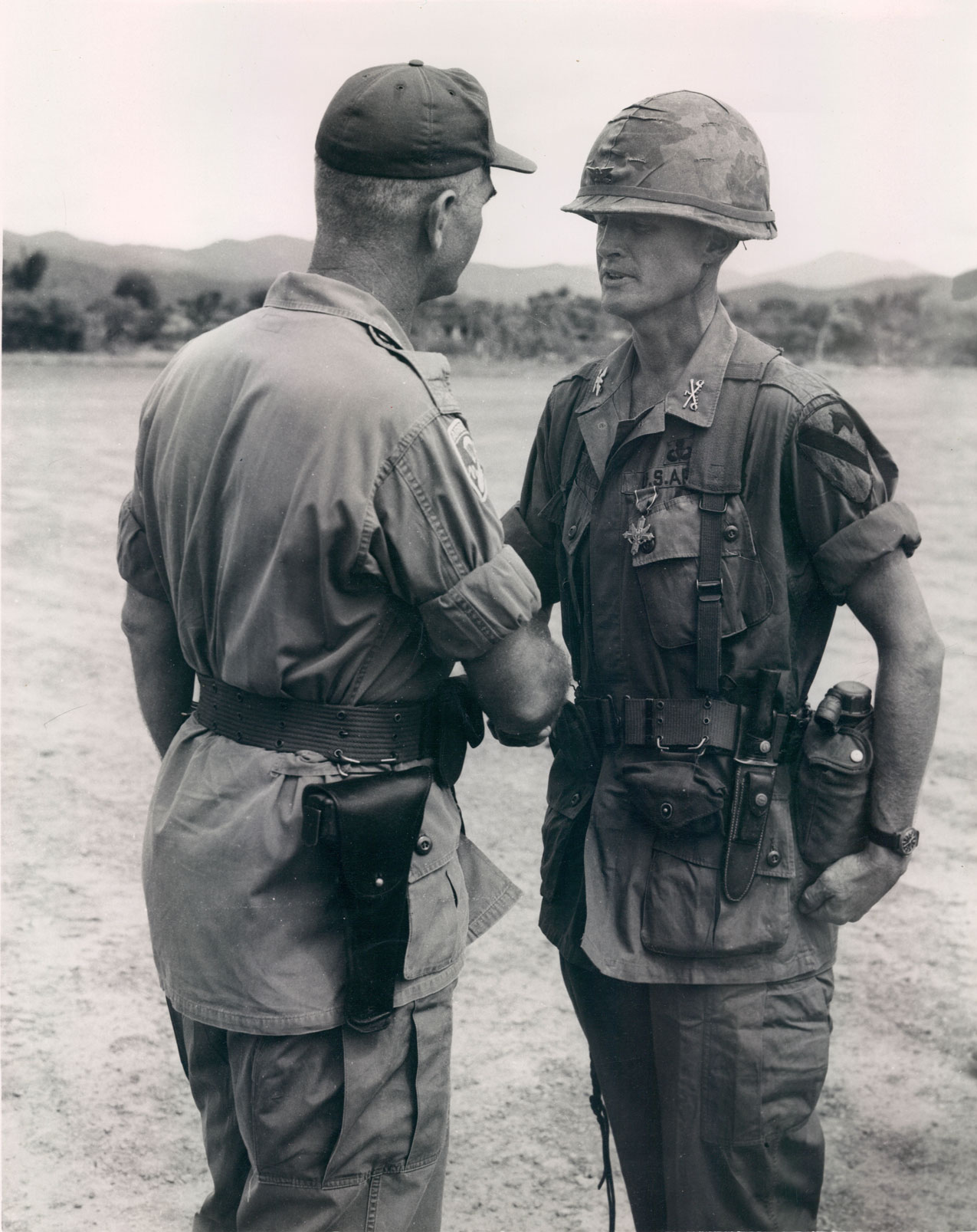
General William Westmoreland shakes Colonel Hal Moore's hand, DSC presentation, June 1966
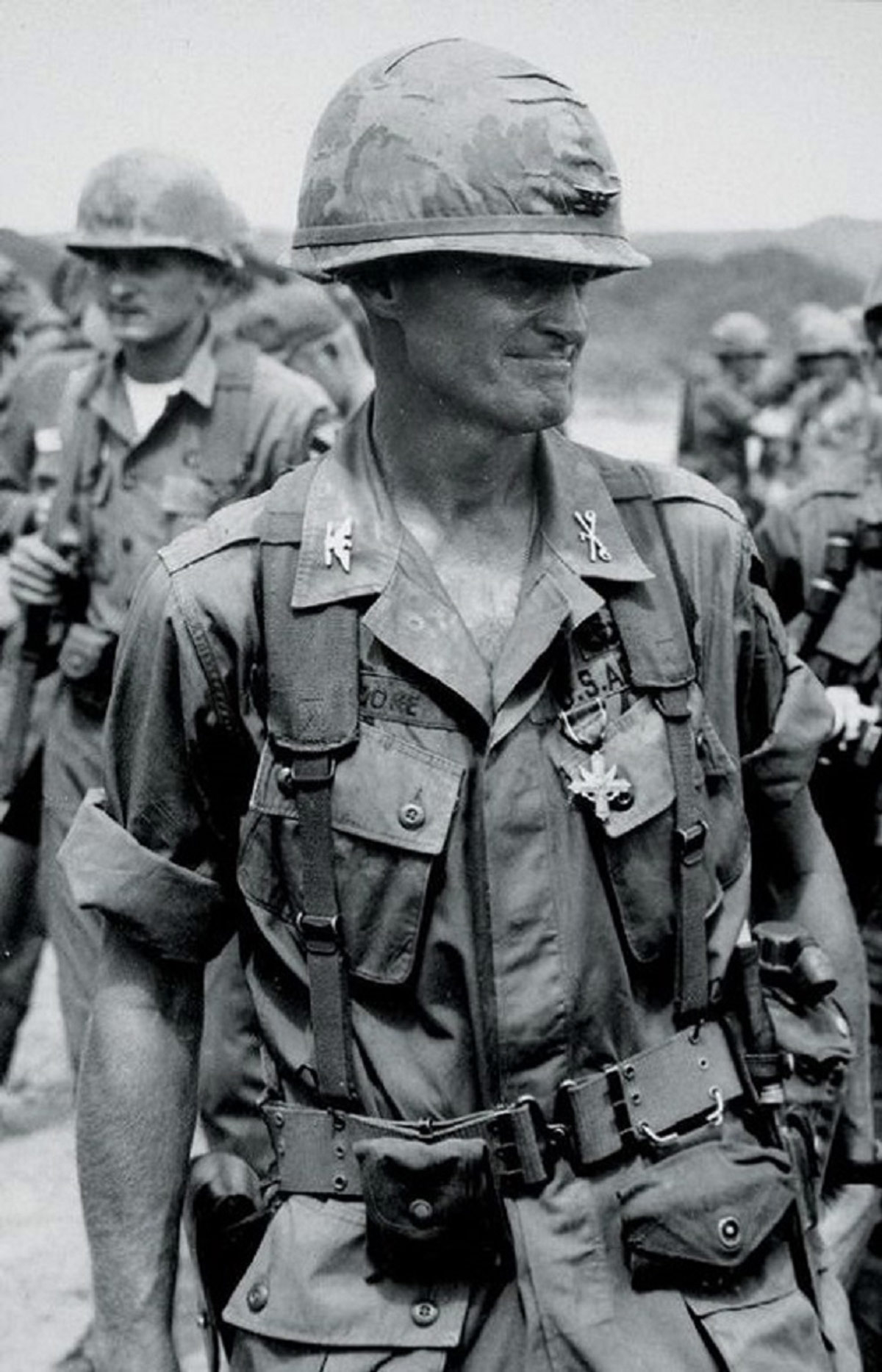
Col Hal Moore, June, 1966, DSC Presentation (photo courtesy Jack Williams)
At the time, along with the national publicity about that victory came the inevitable news media photographs. Especially famous is one of Col. Moore after receiving his DSC for actions on LZ X-ray. Though this picture has been published many times, most recently as a memorial following his passing, there is a small detail in the picture that has been overlooked – Col. Moore is pictured wearing a Randall combat knife on his web gear. Therein lies a story.
The Randall Knife in Vietnam
Many Special Forces troopers carried a Randall knife in Vietnam. It was one of the three legendary personal items needed to present the image of hard core SF during this era … Randall knife, Rolex watch, star sapphire ring, (and some irreverent troopers added a fourth item…divorce papers). Therefore, for an RVN Special Forces vet, that famous picture of Col. Moore posed some questions: where is Gen. Moore’s knife that appeared so prominently in the DSC photo? How did his Randall relate to the famous Randall that Gen. Westmoreland usually wore in the field in RVN? And for that matter, where did the Randall knife tradition in the airborne and SF originate?
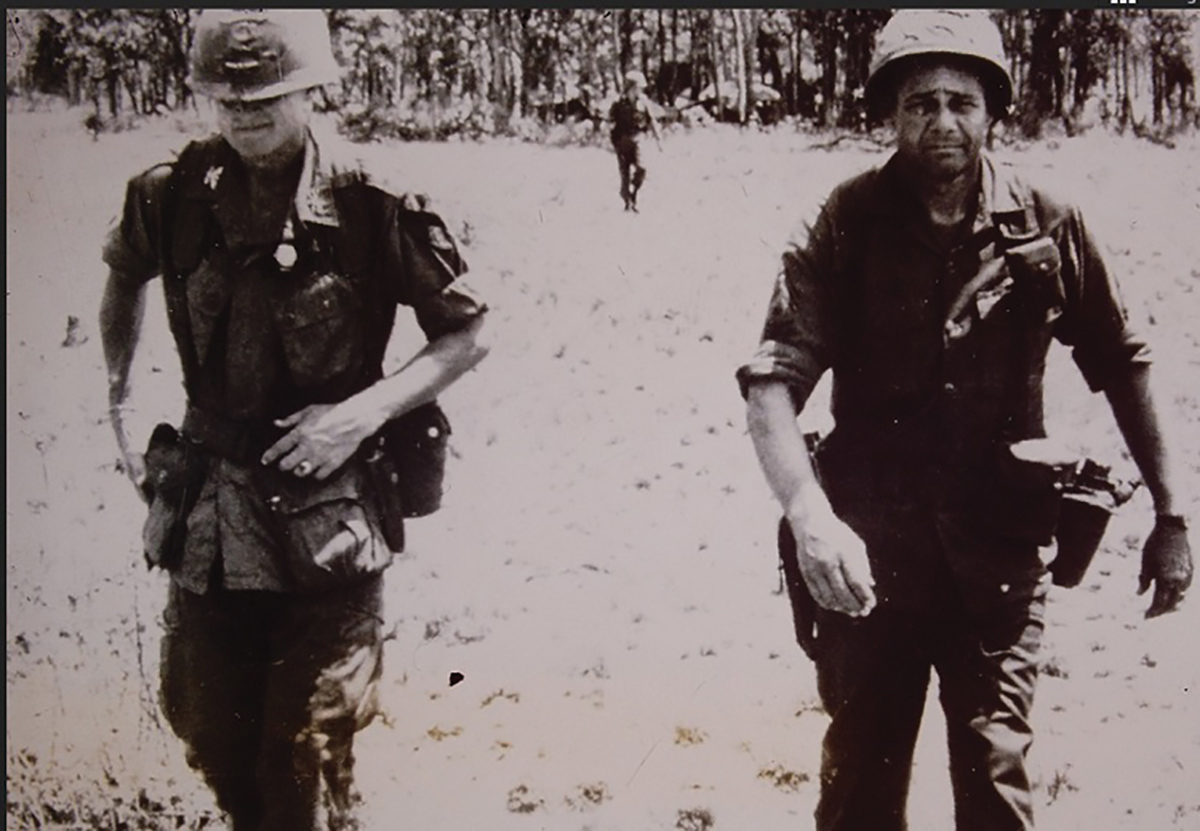
Col. Moore – wearing Randall - return to LZ X-ray in 1966 with CSM Plumley searching for MIAs from LZ Albany. (photo courtesy Jack Williams)
Searching for answers, I found a Facebook site dedicated to the memory of Gen. Moore, maintained by his two sons, LTC (ret) Steve Moore, and Col. (ret) Dave Moore. I posted a query asking about Gen. Hal Moore’s Randall and received an interesting message from LTC Steve saying he thought his father’s Randall had actually belonged to his grandfather, Hal Moore’s father-in law, Col. Louis Compton. A short time later, LTC Steve sent me some pictures of his grandfather’s Randall knife and another picture of Col. Compton with Bo Randall himself in Florida probably in 1942.
When I examined these pictures, it quickly became apparent that Col. Compton’s knife was very rare and unusual. Posting these pictures on the Randall knife collector’s forum attracted experts who agreed this was one of the first thirty or so model 1 “fighters” ever made by the Randall Knife shop, probably in late 1942. His military record, and his name etched on the blade combined with the picture of Col. Compton and Bo Randall made the knife potentially of great value to a collector. But who was Col. Louis Compton and how did he come to have a Randall knife, and how did Gen. Moore get it and why did he take it to Vietnam?
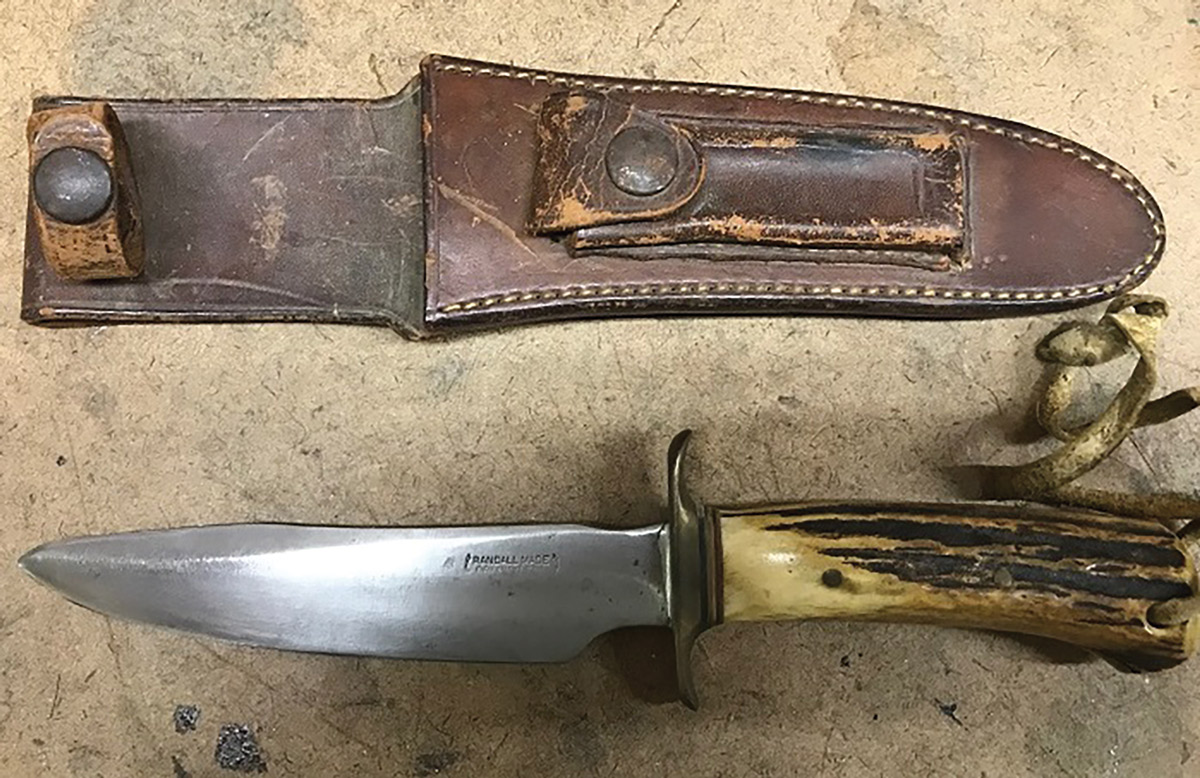
Col. Compton’s very early 1942 Randall knife (photo courtesy LTC (ret) Steve Moore)
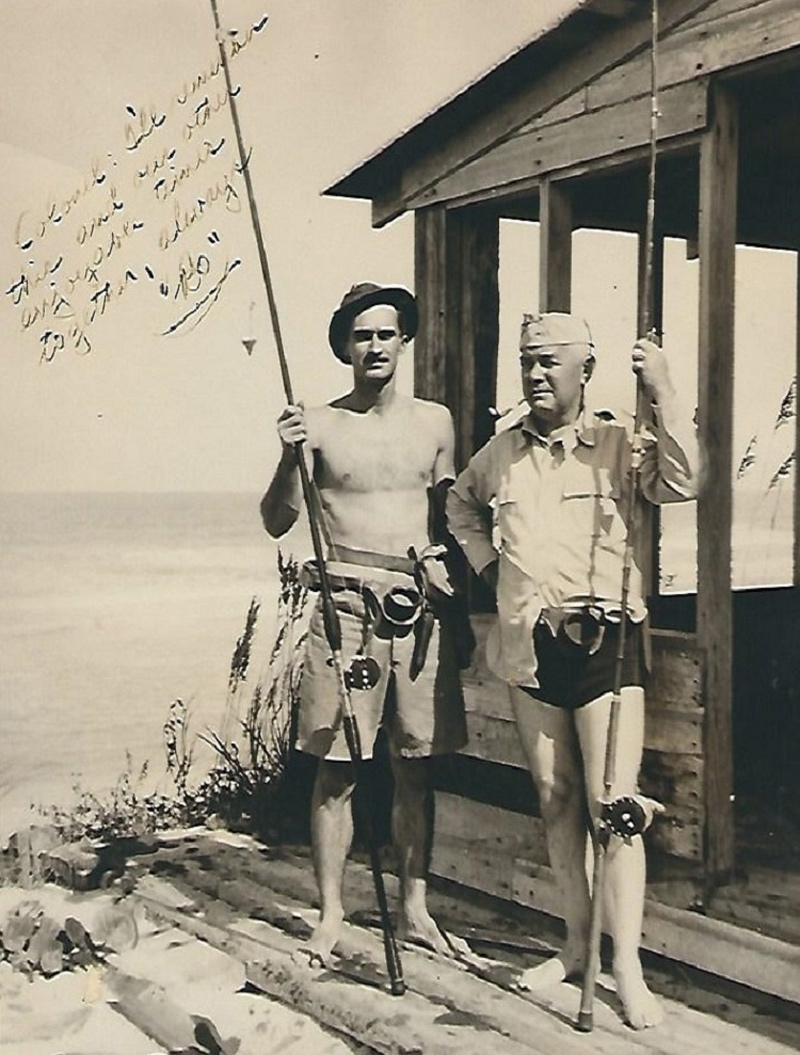
Col. Compton and Bo Randall, 1942 (photo courtesy LTC (ret) Steve Moore)
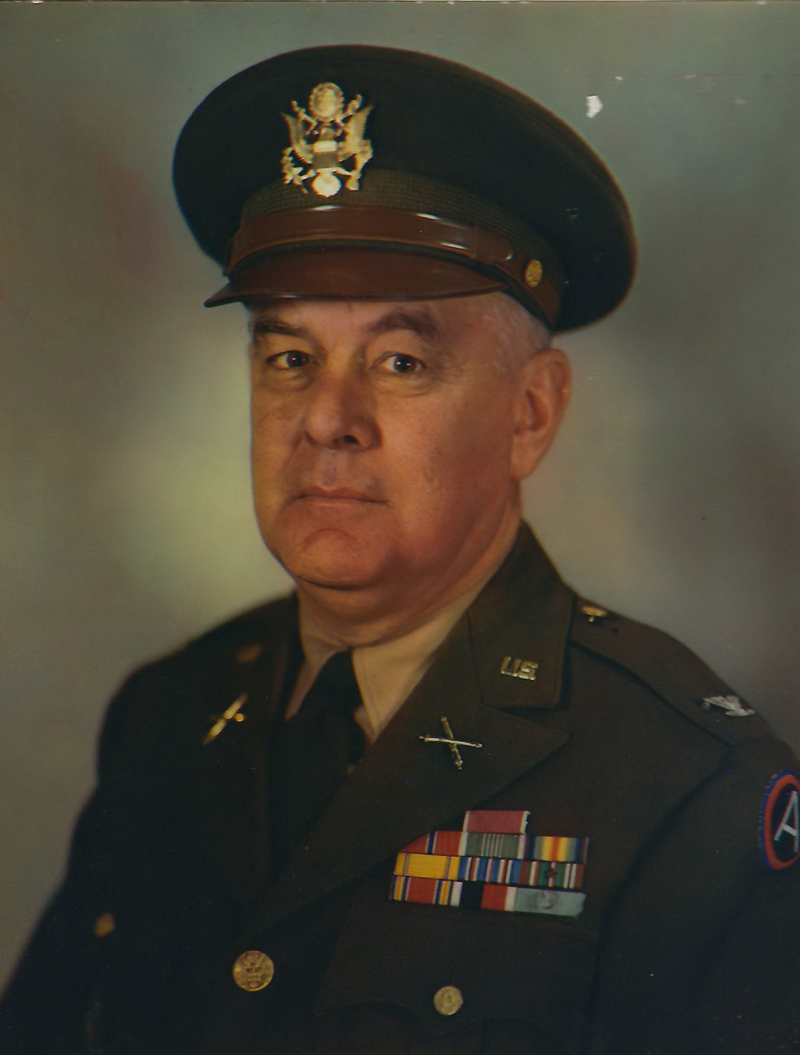
Col. Louis Compton (photo courtesy Jack Williams)
Col. Louis Compton
Col. Compton began his career as an officer during WWI, and his service spanned over 30 years. His last command was with the artillery of the 15th Army, the last US Army deployed to Europe in early 1945. Ironically, in December, 1944, his transport ship taking the main body of the HQ of the 15th Army to France was torpedoed in the English Channel and sank. Col. Compton received a bronze star for his actions saving lives and organizing the ship evacuation. Later, after WWII, he served on the staff of a satellite Nuremburg tribunal and later helped author several studies of war-time armor before retiring in 1951. He presumably carried his Randall with him to the ETO, having likely acquired it from the Randall shop in 1942.
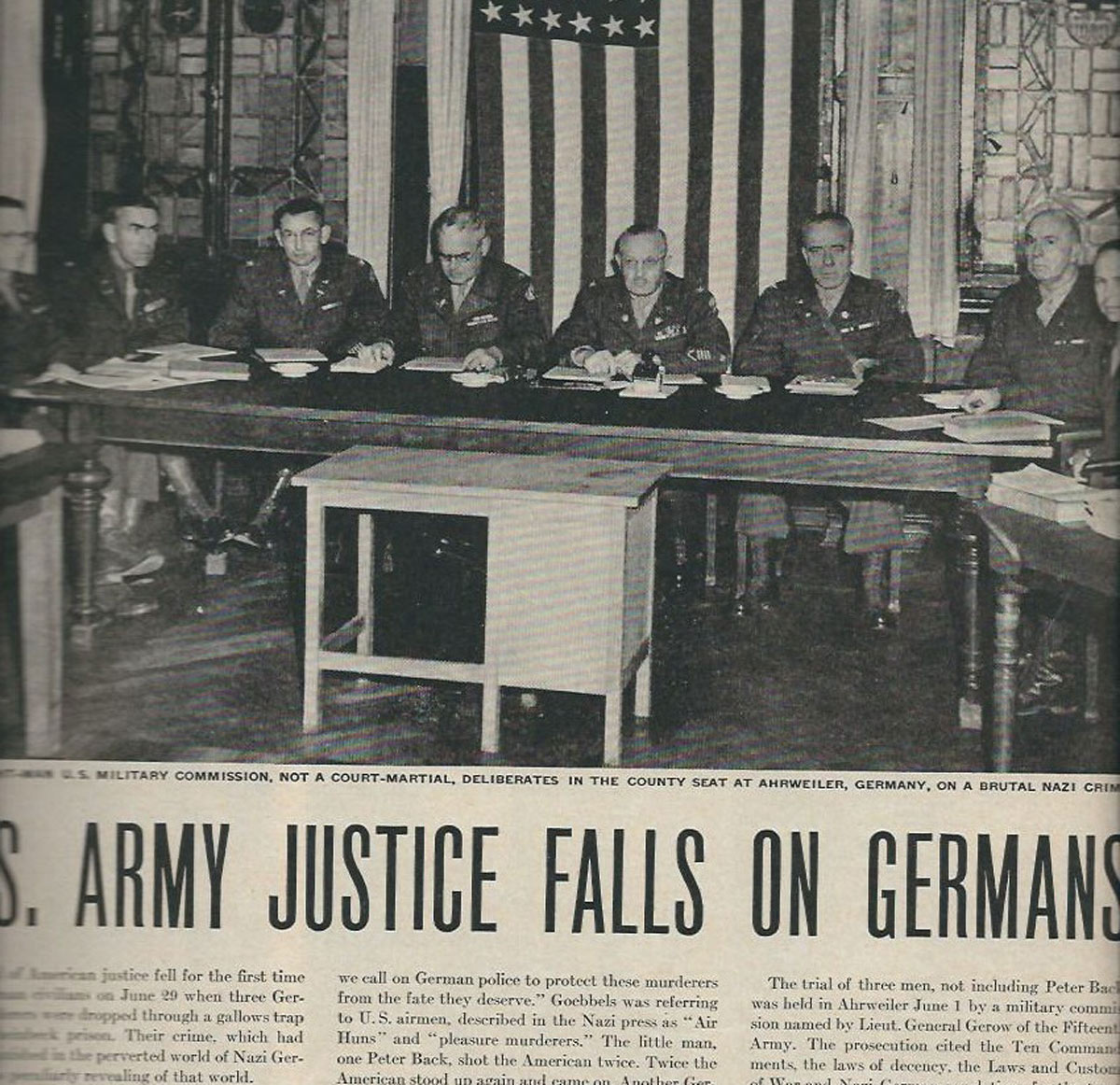
Col. Compton and tribunal, Germany, 1945 (photo courtesy Jack Williams)
Immediately before WWII, Col. Compton apparently mentored a young Lt. William Westmoreland, who was assigned to artillery just out of West Point. This is thought to have been the source of a long-time bond of personal regard between Westy and Col. Compton. But perhaps his greatest accomplishment was fathering a beautiful daughter, Miss Julia Compton. In 1949, she married Lt. Hal Moore, a promising young West Point officer who had volunteered to be part of the Airborne Test Section of the Army Field Forces Board, stationed at Fort Benning. The Airborne Test Section was commanded by Col. Compton, who reported to General Harry Kinnard in Fort Bragg. Gen. Kinnard later commanded the 1st Cavalry Division in the Ia Drang Valley campaign. At that time, Moore was making some of his 300 jumps, testing new parachutes and techniques. During this assignment, he twice survived terrible chute and jump malfunctions.
When LTC Steve forwarded the pictures of Col. Compton’s early Randall, the vintage Randall collector community eagerly examined and debated the old knife’s significance… what a find!! But what quickly became apparent was this: though Col. Compton’s knife was indeed an important historical artifact, it was not the knife Col. Moore was wearing when he received his DSC. Thus, the original questions were still unanswered even though a trove of interesting information had been discovered. And… why a Randall?
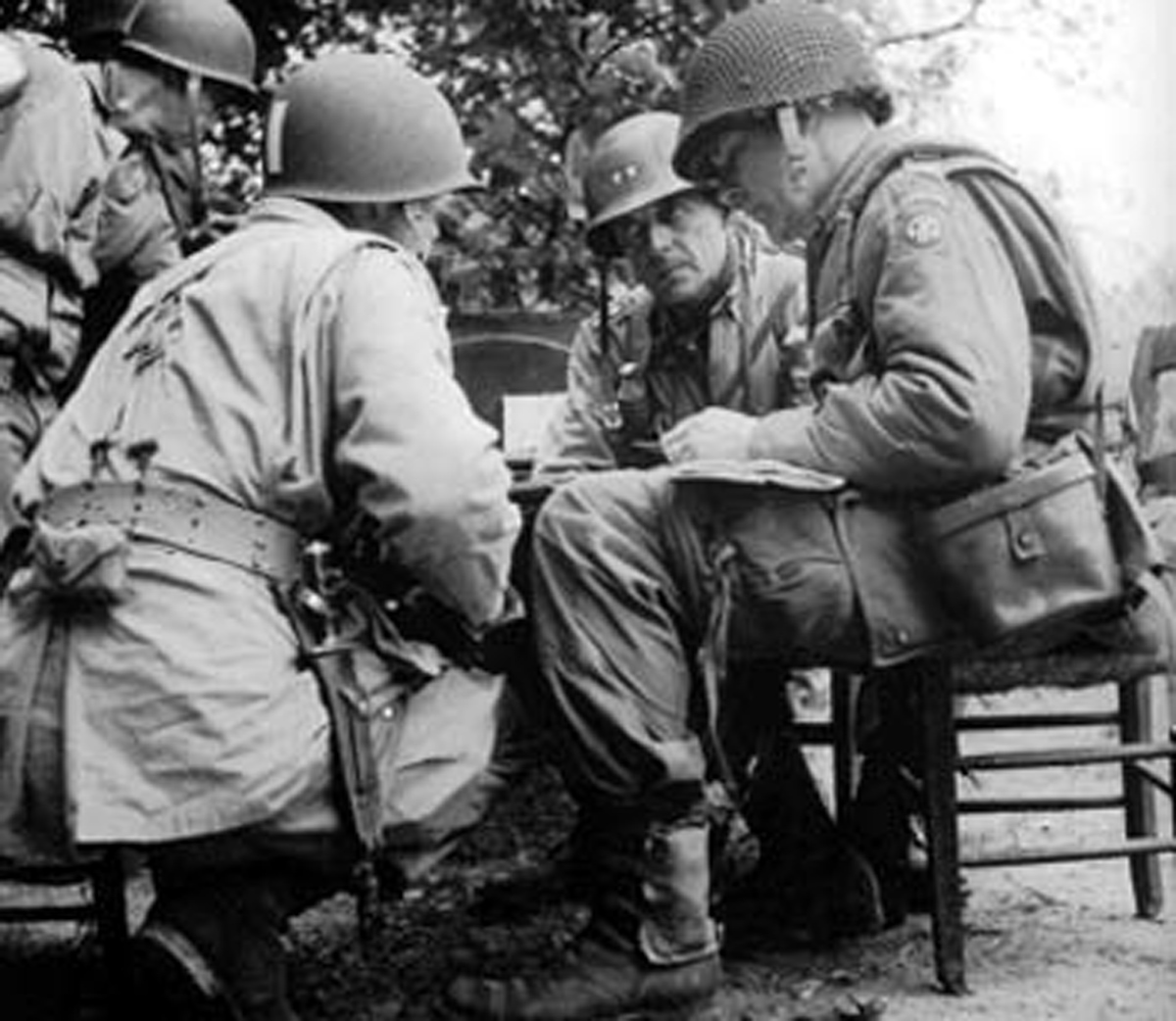
Gen. James Gavin (back to camera) wearing Randall - with Gen Mathew Ridgeway during Normandy campaign. (photo courtesy Jack Williams)
Why a Randall?
“Why a Randall?” – requires going back in time. In late 1942, Col. James Gavin, CO 505th PIR, acquired his famous Randall knife, and carried it into the Sicily campaign. A magazine interview with him in Sicily prominently mentioned his Randall and he was thereafter frequently photographed with it. One such picture taken during the Normandy Campaign showed him wearing his knife while consulting with General Ridgway (shown above). He later wrote a letter saying: “I carried it with me on my four combat jumps, and to the best of my knowledge, I was never without it. It filled a need for me, and I still have it.” (Gen. Gavin’s famous Randall is on display in the museum at West Point—see below)
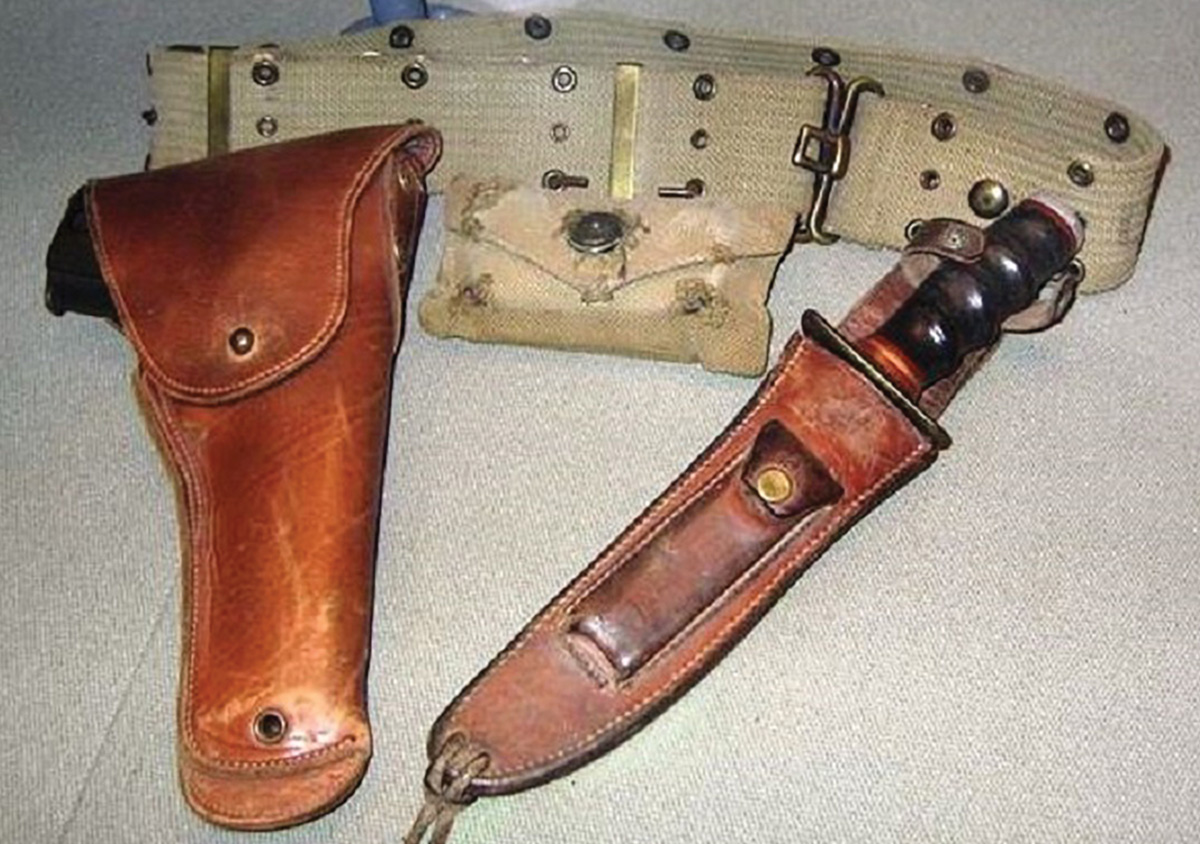
Gen. James Gavin web gear and Randall in West Point Museum (photo courtesy Jack Williams)
Almost immediately after the story of Gavin and his Randall was published in Life magazine in 1943, first the officer corps of the Parachute Infantry Regiments (PIR), and then many enlisted men began acquiring Randalls as their personal equipment. Among the Airborne officers who emulated Col. Gavin was Lt. John Singlaub (later General) who acquired his knife in 1943 and carried it during his tour with the Jedburgh in ETO, and thereafter throughout his career. In 1985 he was quoted as saying that his Randall knife had served him well throughout the years and was still part of the emergency equipment he kept packed and ready.
The power of tradition, the beauty, and admittedly the high cost of a Randall made it a premier status symbol among the early paratroopers, especially officers. Five years later use of a Randall during the Korean War solidified its reputation, and it was without a doubt the prestige blade of both the Ranger battalions and the Airborne. When Special Forces formed in 1952, many of the earliest transfers came from Airborne units or from the disbanded Ranger battalions … and so the Randall almost by default became a symbol of SF in its earliest days.
What about General Moore’s Randall?
But what about General Moore’s knife and the other questions? Hal Moore graduated from West Point in May, 1945, and chose infantry branch (years later a young West Point cadet, Norman Schwarzkopf, opted for infantry in part because of his esteem for one of his professors, then Major Hal Moore). After some glider assault training and some infantry assignments Captain Moore volunteered for Airborne and became a test-jumper for experimental parachutes, twice surviving near fatal situations. In Korea, Captain Moore was in combat for 14 months in the 7th ID, leading a heavy mortar company, and then a period commanding an infantry company.
In 1957-58, Hal Moore was assigned to work directly with General Gavin developing the prototype air mobile concepts. Being airborne qualified and working directly for General Slim Jim would have exposed him to the lore of the Airborne/Randall knife connection. But even at this time no record has been found of Hal Moore carrying a Randall knife nor do his sons remember him having one in the house. Furthermore, there doesn’t seem to be any record of his using his father-in-law’s WWII Randall either.
So… fast forward to Vietnam. General William Westmoreland arrived in Vietnam in December, 1963 and took over MACV in mid-1964. In mid-1965 the newly organized and trained 1st Cavalry Division, the first air-mobile division in the world, deployed with LTC Hal Moore commanding the 1st Battalion, 7th Cavalry Regiment. Almost immediately committed to the border fight near the Special Forces camp at Plei Me (A-5/217), the battalion engaged in the famous battle in the Ia Drang Valley at LZ X-ray. The victory at X-ray proved the air-mobile concept and made the 1st Cavalry into the “first team.” That famous battle made LTC Hal Moore a household name for his leadership, valor, and for the victory. It later spawned a best seller book We Were Soldiers Once…and Young, followed by a block buster movie starring Mel Gibson as LTC Moore.
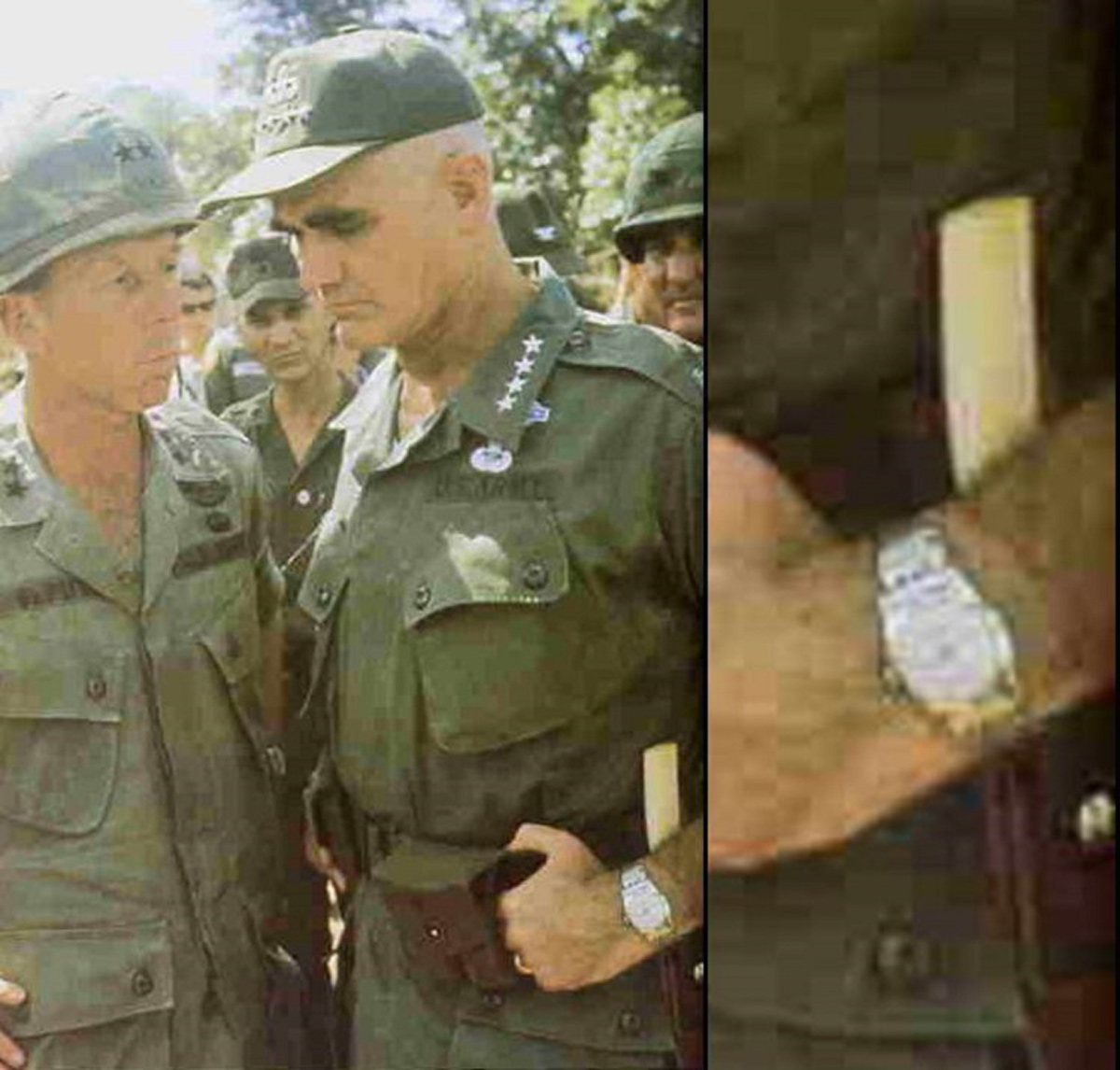
Gen. Williams Westmoreland in RVN with Randall and Rolex (photo courtesy Jack Williams)
Immediately after that battle, General Westmoreland, presumably wearing his famous ivory handled Randall knife (pictured above), personally visited the 1st Battalion. A few days later, Hal Moore was promoted to full bird and took command of the 1st Cav’s 3rd brigade, the famous “Gary Owen” brigade. And something else most likely happened. General Westmoreland, in an unusual personal gesture perhaps prompted by his friendship with Hal Moore’s father-in-law, presented the Colonel with a Randall knife in personal recognition of his valor and leadership and as a symbol of the his Airborne pedigree.
When higher resolution pictures provided by LTC Steve were published, experts in the vintage Randall collecting community identified his knife as a model 2 with 7-in blade in a Johnson brown button sheath likely made late in 1962. But those are details for collectors. What is most important was that Col. Moore wore that knife in the field and in ceremonial occasions thereafter.
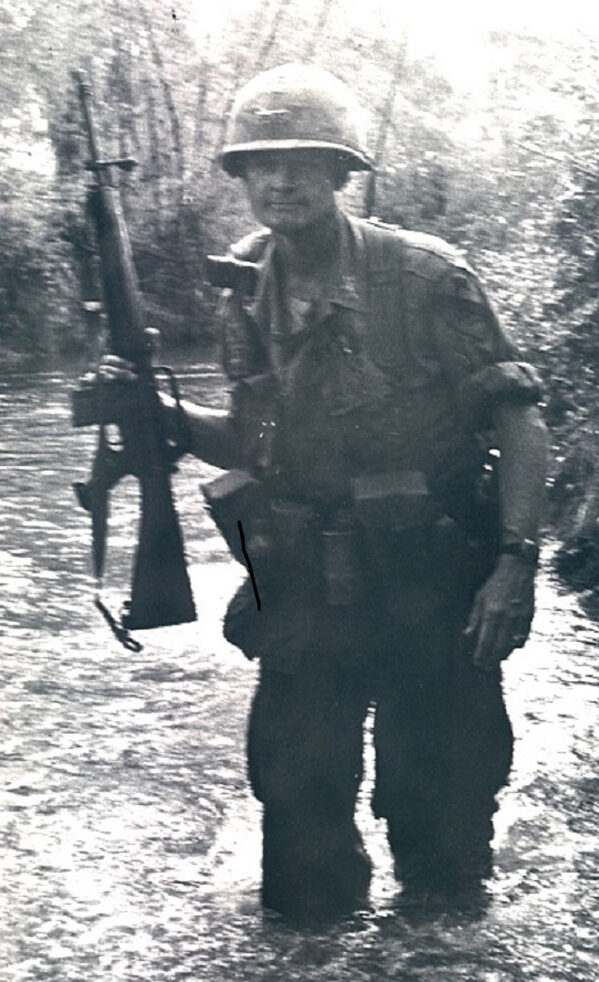
Col. Hal Moore, RVN, 1966 with Randall
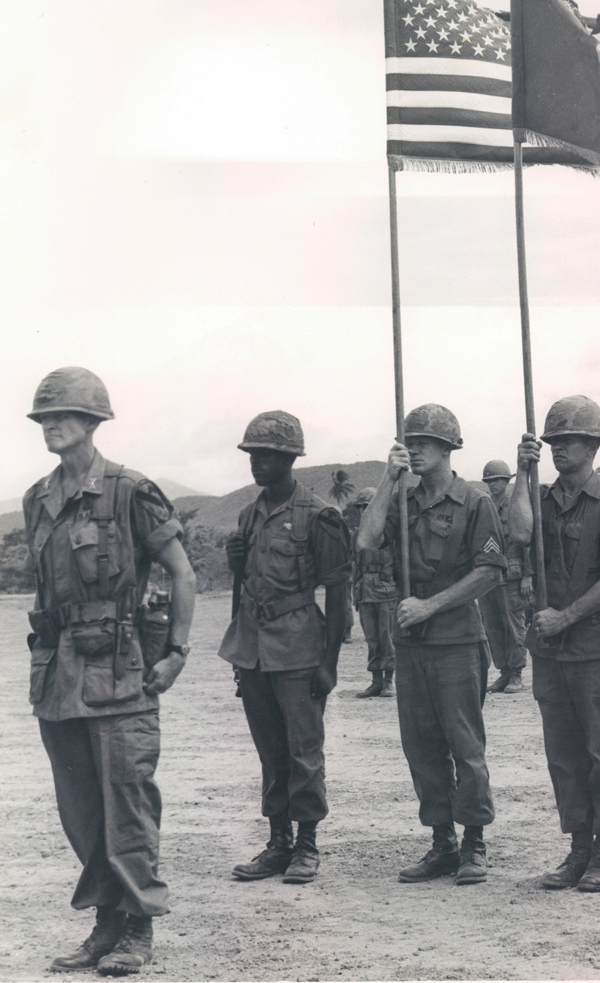
Col. Moore decoration ceremony, 1966 with Randall (photo courtesy Jack Williams)
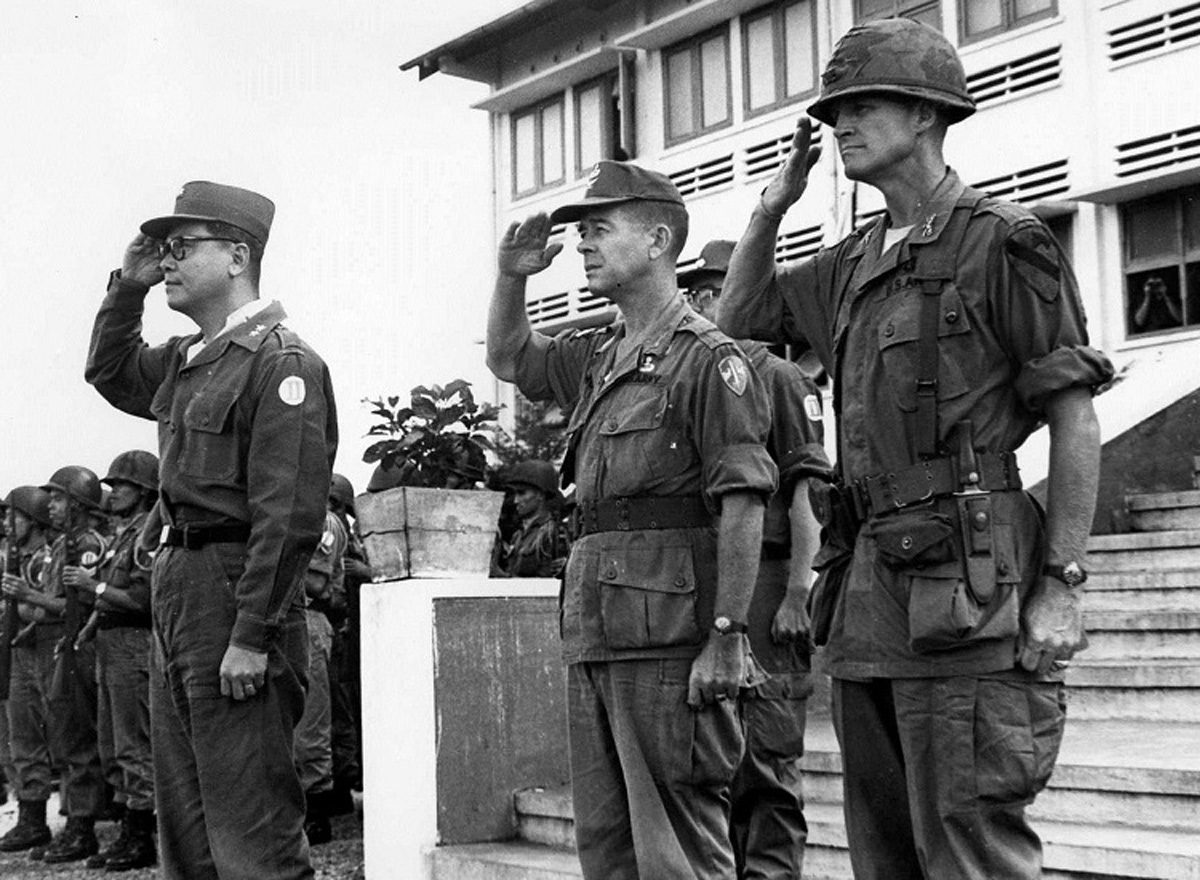
Col. Moore at ceremony, 1966, wearing Randall (photo courtesy Jack Williams)
And for the rest of the story?
LTC Steve wrote the following:
“Jack – my brother … [Col. Dave] told me that Dad treasured the pictured knife. It was given to him by Gen. Westmoreland and was stolen out of the shipment when the family moved from Korea to Fort Ord, CA.
My brother moved to Auburn after he retired from the Army to make sure Dad was taken care of and spent far more time with him than the rest of us. Many times when Dad would see the picture with the DSC (people would send it for his autograph), he would express his sadness at the loss of the knife.”
So now the story is completed. General Westmoreland presented Col. Moore with his Randall Model 2-7 knife after the battle at LZ X-ray. Gen. Westmoreland had an impeccable airborne pedigree, was a close personal friend of the in-laws of Hal Moore, and had his own cherished Randall knife that he routinely wore in the field (Westy’s knife is on display in the South Carolina Military Museum in Columbia, SC). Westmoreland’s apparent esteem for the Randall, and the fact that his long-time friend, Hal Moore’s father-in-law Col. Compton who had his own vintage Randall carried in WWII, were possibly the inspiration that prompted the special presentation of a personal Randall knife to Col. Moore.
Where General Westmoreland acquired the knife he presented to Hal Moore that November day, 1965, cannot be ascertained though it could have been given to him upon his assuming command of the XVIII Airborne Corp in 1963 prior to his departure for Vietnam. What is documented is that Hal Moore proudly wore the knife General Westmoreland presented to him thereafter, harkening back to the airborne tradition established by Gen. Gavin.
As LTC Steve wrote:
“Dad clearly loved the knife. The only thing certain is what he told my brother – Westmoreland gave it to him in VN.
Westmoreland was an old airborne guy and, as the thread pointed out – they all had Randall knives. I [would think it possible] this was Westmoreland’s personal knife he carried and he replaced with the ivory one.”
And … the answer to the final question? Unfortunately the knife was stolen from Gen. Moore’s personal baggage when he was returning from assignment as Divisional CO of the 7th ID in Korea.
So a footnote in history is filled in. Col. Louis Compton, Mr. Bo Randall, Gen. Gavin, Gen. William Westmoreland, Hal Moore, airborne/Special Forces troopers and Randall knives, torpedoed transports, Nuremburg trials, a wedding, air-mobile training, 1st Cavalry Division, Landing Zone X-ray, DSC awards …. all these elements go into an incredible collage of historical trivia. And perhaps someday, Hal Moore’s knife will surface. We can only hope.
Postscript: In 2002 Gen. Moore wrote a draft book tying the evolution of his personal leadership style to specific events in his life. That book lay dormant, like the Randall knife, until it was discovered on an old hard drive. LTC Steve worked closely with Mike Guardia, a noted military author, to finalize Moore’s final gift to the Army. Hal Moore on Leadership; Winning when Outgunned and Outmanned was published in July and is a powerful read of the very personal stories Hal Moore used to make his points.
Jack Williams honored his long-time friend Lonny Holmes, former editor of the Sentinel, with this custom Randall knife. The display stand is decorated with 5th SFG and 1st SFG badges and a 1st SFG Coin, groups that Lonny served in during the Vietnam War. His name is inscribed on the blade.
ABOUT THE AUTHOR
Jack Williams, a former SF 051B (commo for the young SF) who served in the 5th Special Forces Group (Airborne) in Vietnam at Ben Het and Dak To in II Corps in 1968, comes from a military family with a history dating back to the War of 1812. His father, Lt. Gene Williams, was a Pathfinder in the 82nd Airborne Division, 508th PIR, and jumped into Normandy on D-Day. Unfortunately, he was killed in action on June 20, 1944, before he could receive the message that he was the father of twin sons. After discharge from the army, he completed his education, ultimately graduating with two master’s degrees in engineering. In his service, Jack carried a Randall knife, and in the years since, he has become a collector and a U.S. expert on Randalls of the Vietnam era and has written extensively regarding these custom knives.
A friend of former Sentinel editor Lonny Holmes since their days at Fort Bragg, N.C., in late 1965–1966, Jack has been a significant contributor to the Sentinel.
July 2014 — “The Vietnam Randall” by Jack Williams
December 2015 — “Tracking Down A Hero; the story of SGM James O. Schmidt” by Gene and Jack Williams
April 2017 — “The Last Pathfinder Company is History: Long Live History!” by Jack Williams
August 2019 — “D-Day 75th Anniversary: A Normandy Experience” by Jack Williams
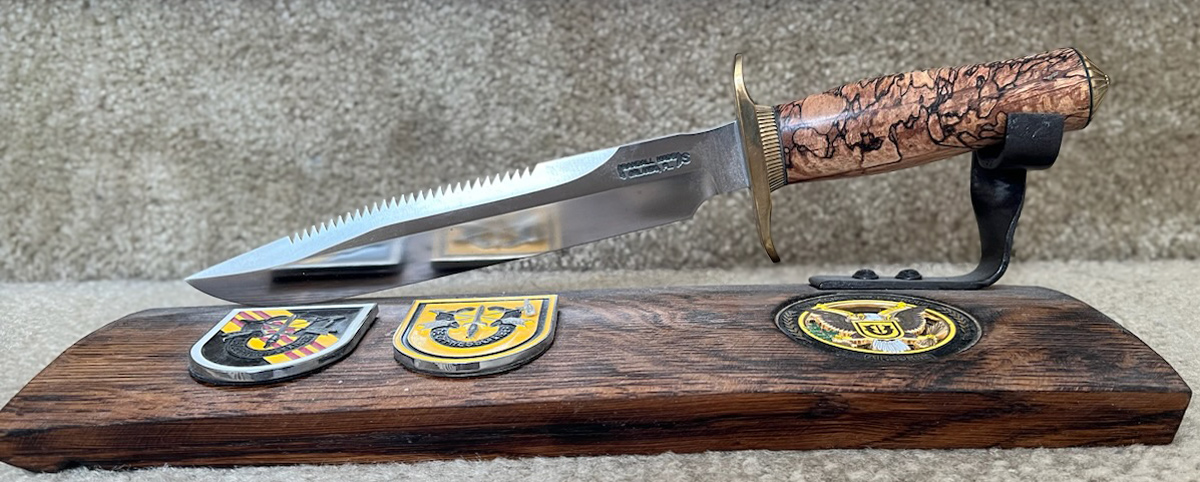
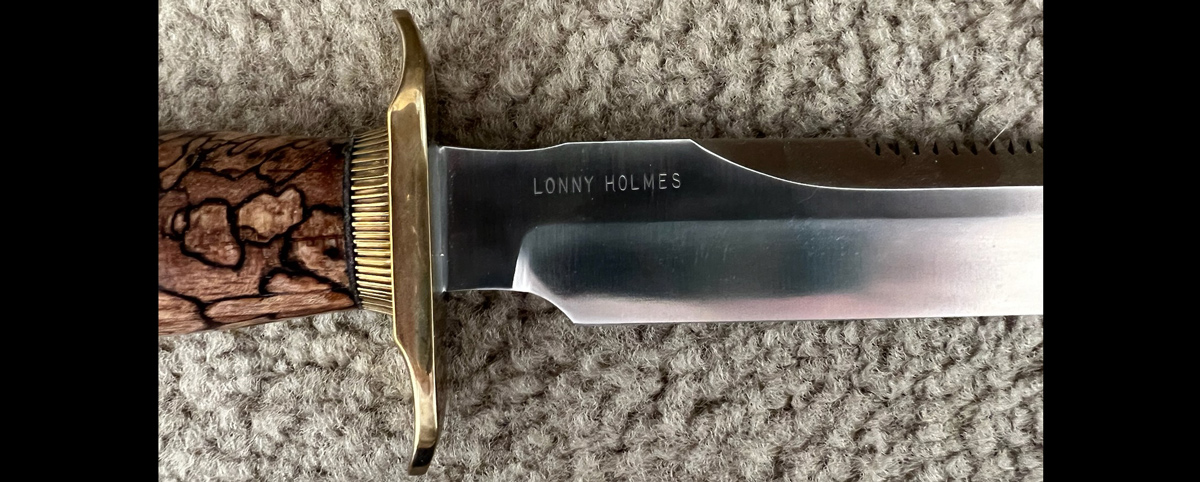
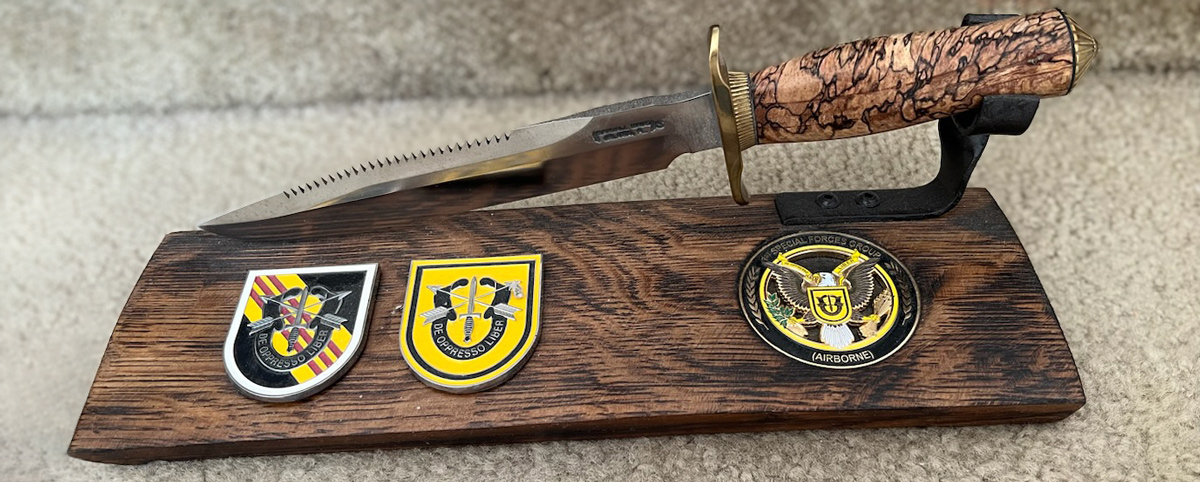
A truly fantastic story of the Randall Knife thru the eyes of some of the U.S. Army’s foremost commanders by a SF Cmmo man who also carried a Randall in combat.
terrific history